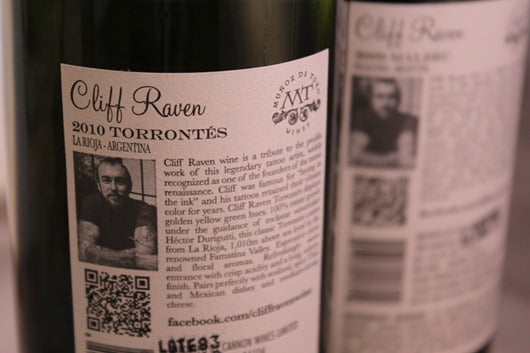QR Codes in the Wine Industry – Helping the Buying Experience
December 14, 2010If you haven’t already seen them, QR (Quick Response) codes are one of the latest technologies that have started popping up on wine labels. Whilst not exactly new (they have been around since ‘94), I’m thinking that over the next year or two this type of technology is going to become extremely prevalent, especially in the wine industry.
QR codes, which look like a pixelated black and white square, come to us from Japan (of course) where they apparently are common-place. The codes essentially are used to store data, including website links, coordinates or text, and all you have to do is point and click your cell phone to access the info (once you have installed the appropriate app). There are a multitude of different apps out there, some are better than others but all doing basically the same thing. I personally use Quickmark on my Android phone.
If you have never seen a QR Code before, check out the picture below. The code is the pixelated square toward the bottom left.
The Practical Application of QR Codes
First and foremost, the two major bonuses behind creating QR codes for a business is that they are free and very easy to generate. This is a good start to help with easy adoption of the technology, but I’m going to propose that the future rests solely in the hands of the businesses that are choosing to adopt early i.e. NOW!
If wineries / wine brands (or indeed any other type of business) takes the time to label using a QR code, but then only have them link to their main website, I honestly don’t believe that the general public is going to get excited about the product. I suggest that in order for this technology to succeed, businesses need to reward those that take the time to point and click.
Here are a few ideas:
-A direct web link to a short video explaining very briefly about the product. For a wine it would be something along the lines of “So you want to learn more about wine X?….it comes from wine region Z…it tastes like…it can be paired with….". For obvious reasons the video should be short, catchy and straight-to-the-point.
-A link to a custom landing Page on Facebook, therefore killing two birds with one stone: informing the consumer about the product and also giving them the chance to further engage the brand through social media.
-A web link to a coupon or voucher off the purchase of that particular product.
-Any other benefit that could not be otherwise gained without taking the time to click the code. Help the potential customer make an informed purchase decision about your product!
The Future
It has already been stated in the media that visual search applications such as Google Goggles could potentially threaten the future of the QR code, and if you haven’t already heard of Google Googles I suggest you check it out (it’s very impressive)! The basic premise (and to use a wine brand as an example), is that once the application is installed to your phone, all you have to do is take a photo of the front label, the app recognizes text and leads you into a specific Google search for that product. Other benefits of the app include foreign language translation and the ability to take a photo of a business card and upload the info direct to your contacts.
If you want to learn more about Google Goggles click here.
The main benefit that QR Codes have over this type of technology is that the brand is in much more control of what content the user is seeing. Rather than just leading you into a general search, QR codes direct you to a specific web address.
I for one am a big fan of this type of technology, but I truly do believe that if consumers who adopt the QR technology are not rewarded with a valuable, engaging and even fun experience, the humble pixelated black and white box will surely die a long drawn-out painful death.
This entry was posted in News and tagged Cliff Raven. Bookmark the permalink. ← Take Away Gourmet Christmas Menu New Years Eve Wine Dinner at The Grape →










